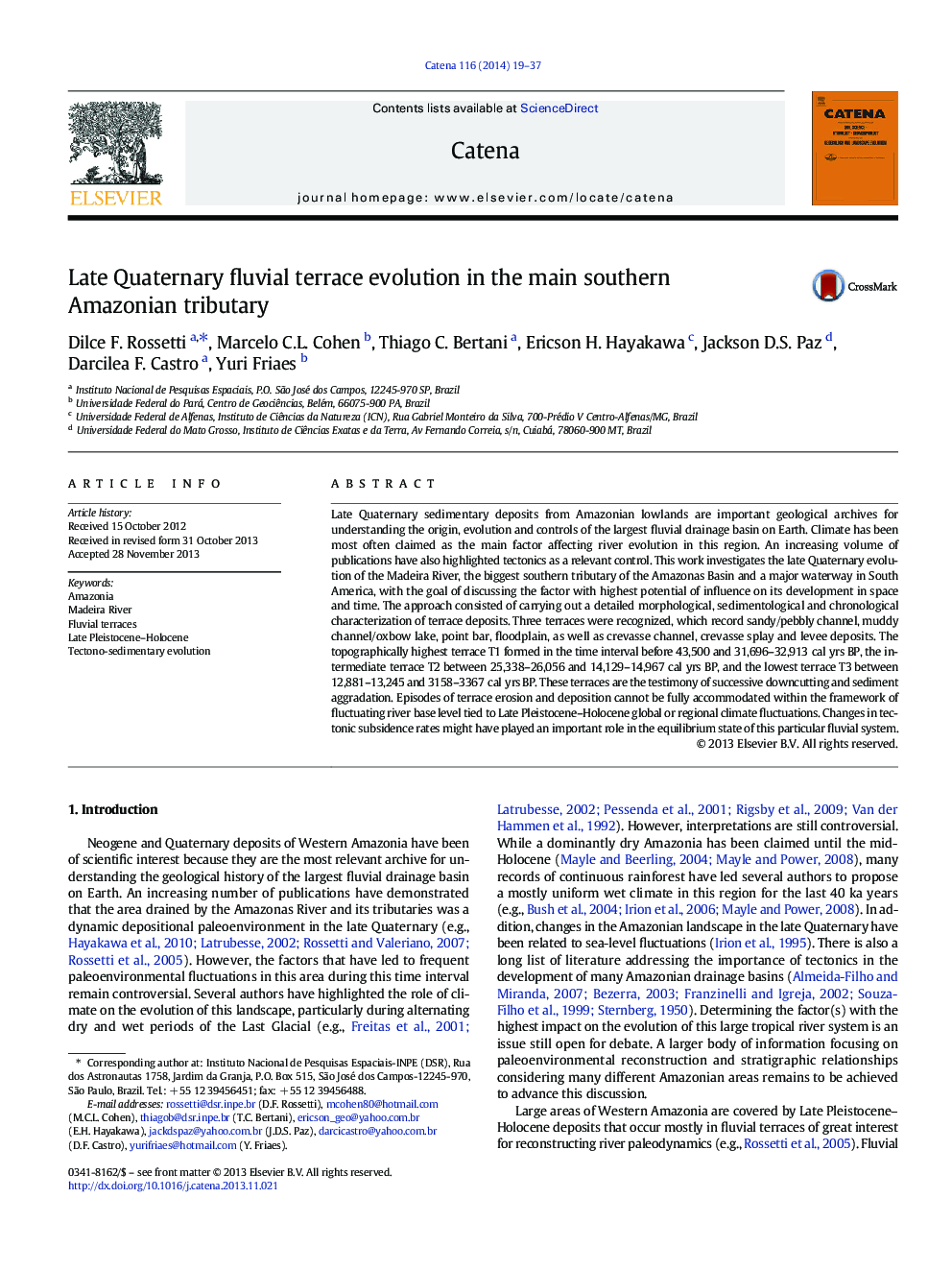| کد مقاله | کد نشریه | سال انتشار | مقاله انگلیسی | نسخه تمام متن |
|---|---|---|---|---|
| 4571465 | 1629236 | 2014 | 19 صفحه PDF | دانلود رایگان |
• Amazonian rivers were influenced by Quaternary global ice fluctuations or tectonics.
• Quaternary fluvial terrace deposits are important archives to test these hypotheses.
• A long segment of the Madeira River displays terraces of nearly 40,000 cal yr BP.
• Downcutting and sediment aggradation on terraces do not match with climatic episodes.
• Equilibrium state triggered by alternation of fault activity and tectonic quiescence
Late Quaternary sedimentary deposits from Amazonian lowlands are important geological archives for understanding the origin, evolution and controls of the largest fluvial drainage basin on Earth. Climate has been most often claimed as the main factor affecting river evolution in this region. An increasing volume of publications have also highlighted tectonics as a relevant control. This work investigates the late Quaternary evolution of the Madeira River, the biggest southern tributary of the Amazonas Basin and a major waterway in South America, with the goal of discussing the factor with highest potential of influence on its development in space and time. The approach consisted of carrying out a detailed morphological, sedimentological and chronological characterization of terrace deposits. Three terraces were recognized, which record sandy/pebbly channel, muddy channel/oxbow lake, point bar, floodplain, as well as crevasse channel, crevasse splay and levee deposits. The topographically highest terrace T1 formed in the time interval before 43,500 and 31,696–32,913 cal yrs BP, the intermediate terrace T2 between 25,338–26,056 and 14,129–14,967 cal yrs BP, and the lowest terrace T3 between 12,881–13,245 and 3158–3367 cal yrs BP. These terraces are the testimony of successive downcutting and sediment aggradation. Episodes of terrace erosion and deposition cannot be fully accommodated within the framework of fluctuating river base level tied to Late Pleistocene–Holocene global or regional climate fluctuations. Changes in tectonic subsidence rates might have played an important role in the equilibrium state of this particular fluvial system.
Journal: CATENA - Volume 116, May 2014, Pages 19–37
